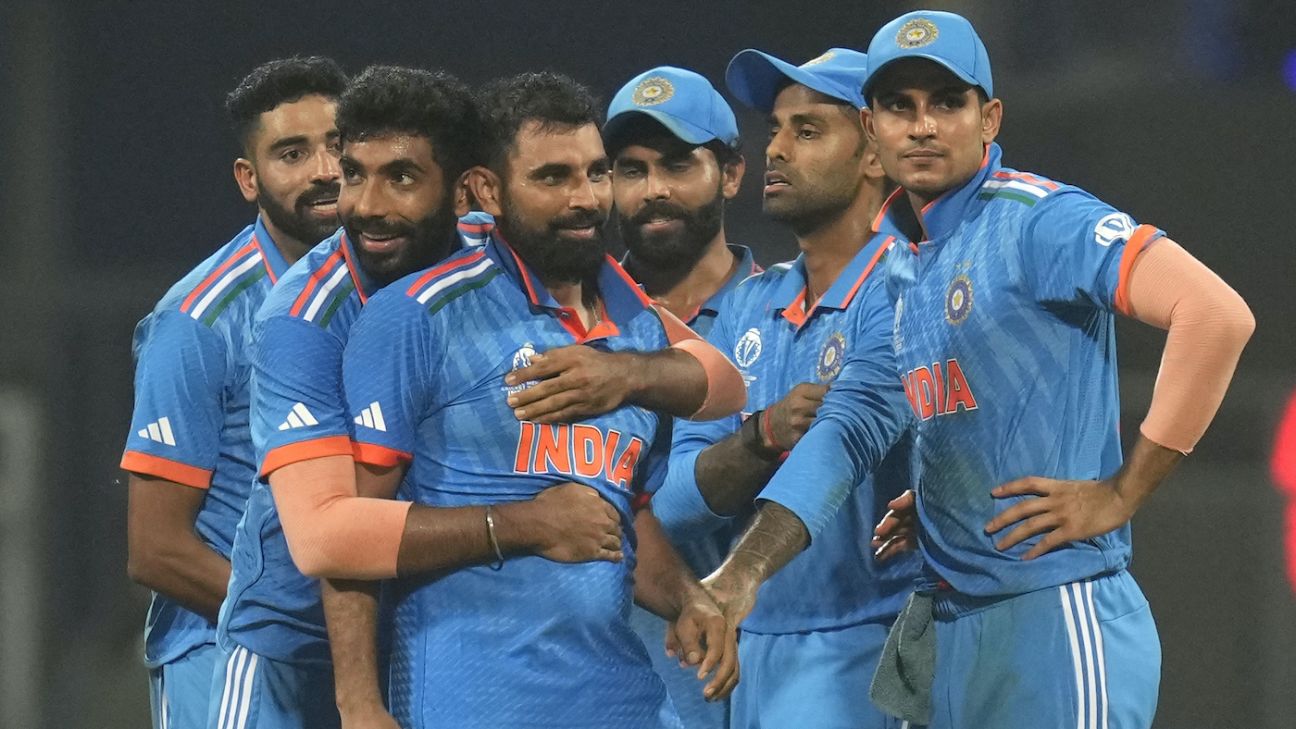India 397 for 4 (Kohli 117, Iyer 105, Gill 80*, Southee 3-100) beat New Zealand 327 (Mitchell 134, Williamson 69, Shami 7-57) by 70 runs
New Zealand had no business giving India the nervous moments they did in a defence of 397 but India eventually made mockery of the supposed knockout pressure as they waltzed into the final, now one step from possibly the most dominant World Cup campaign. The average victory margin for them now is 175 runs, 6.4 wickets and 64.4 balls remaining. Australia’s 2007 triumph was 147.67 runs, eight wickets and 89.2 balls remaining.
You can’t begrudge India any of the breaks they got with the conditions: this was only the second toss they had won in nine knockout matches in limited-overs World Cups since the Mohali semi-final against Pakistan in 2011. On a used pitch, that advantage was negated a little as it would mean marginally more assistance for the slower bowlers during the afternoon and marginally less assistance for the quicks under lights.
However, Rohit converted this marginally smaller advantage into a proper headstart even before spectators had settled in. He already has the most runs, highest strike rate, highest average, most sixes, most fours in the powerplays this World Cup. In a semi-final on a slow pitch, it wouldn’t be unreasonable if he have himself a couple of sighters, but he started going in the first over, flamboyantly flicking a length ball over midwicket in order to create his own momentum into the shot.
